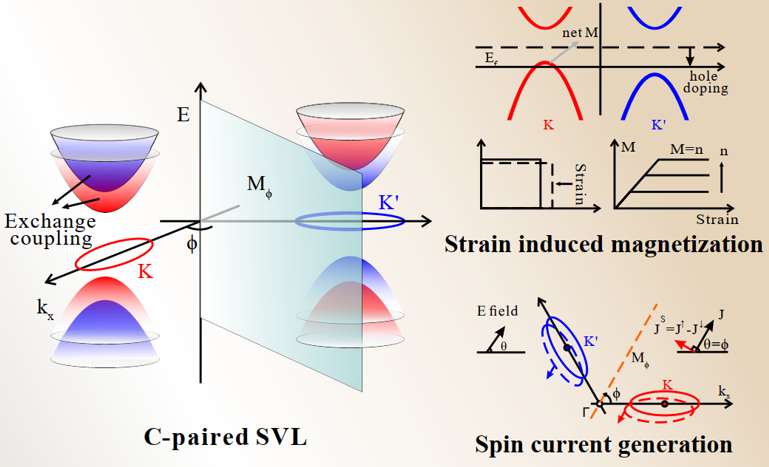| Brief Bio of the Speaker | Prof. Junwei Liu obtained his PhD in the department of physics, Tsinghua University, in 2014, and then he started his postdoctoral research in Massachusetts Institute of Technology. He joined Hong Kong University of Science and Technology in 2017 as an assistant professor. His research interest includes: 1) Topological materials including quantum anomalous Hall insulators, topological insulators topological crystalline insulators and topological semi-metals; 2) Quantum Monte Carlo simulations of strongly correlated systems; 3) Atomic-layer-thin ferroelectric materials and physics; 4) Two-dimensional quantum materials and phenomena; 5) Applications of machine learning in physics. |
Abstract | In this talk, I will take our recently proposed new type of spin-valley locking (SVL), named C-paired SVL, in antiferromagnetic systems. It directly connects the spin/valley space with the real space, and hence enables both static and dynamical controls of spin and valley to realize a multifunctional antiferromagnetic material. The new emergent quantum degree of freedom in the C-paired SVL is comprised of spin-polarized valleys related by a crystal symmetry instead of the time-reversal symmetry. Thus, both spin and valley can be accessed by simply breaking the corresponding crystal symmetry. Typically, one can use a strain field to induce a large net valley polarization/magnetization and use a charge current to generate a large noncollinear spin current. We predict the realization of the C-paired SVL in monolayer V2Se2O, which indeed exhibits giant piezomagnetism and can generate a large transverse spin current. Based on symmetry analysis and first-principles calculations, we also found C-paired SVL can exist in the following experimentally verified AFM materials, NaOsO3, LaMnO3, LaCrO3, TbFeO3, MnTe, RuO2, MnF2, FeF2, CoF2, and NiF2. Our findings provide new opportunities to integrate various controls of spin and valley with nonvolatile information storage in a single material, which is highly desirable for versatile fundamental research and device applications. Reference: Nature Communications 12, 2846 (2021)

|
